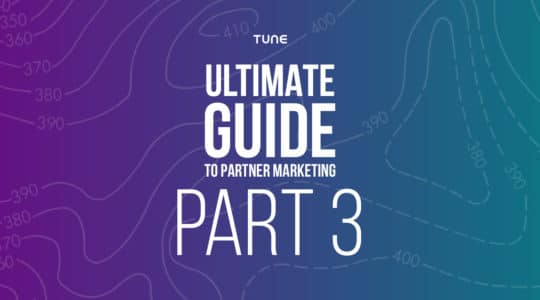
Content blocking was one of the top marketing buzzwords of 2015. And the troubles top brands have run into while executing ad-light content blocking means we’ll keep talking about it in 2016.
But first, what is content blocking? Basically a substitute for ad blocking, content blocking allows anyone on any OS to install ad-blocking software. Besides simply blocking what is perceived as irrelevant and annoying advertising, content blockers also help make web browsing more secure.
The ability to easily block advertising content, of course, presents challenges for publishers and advertisers in 2016. Ads pay for content that is supposed to attract visitors who see and interact with ads. Blocked advertising means less revenue to pay for content, which in turn means potentially less visitors, creating a serious issue for publishers and advertisers alike.
Ad Light: Coaxing Readers to Turn Off Ad Blocking
To deal with the challenge of content blocking, some publishers have turned to an ad-light experience, essentially coaxing visitors to turn off their ad-blocking software in exchange for access to high-quality content. It’s an innovative and honest approach, but, as Forbes has shown over the past few months, it is not without some extreme risks for publishers.
In December 2015, when visitors with ad-blocking extensions visited Forbes, they were met with a splash screen asking them to turn off their ad blockers in exchange for an ad-light experience.

Image credit: Digiday
Forbes‘ ad-light experience generally featured more relevant ads that ditched the typically annoying autoplay video and animation that have made content blockers so popular in the first place. The problem? After visitors had been encouraged to turn off their content blocking software, Forbes immediately (and inadvertently) served them malware.
To be clear, the situation wasn’t exactly Forbes‘ fault—responsibility lies with the ad network that served up the results to Forbes’ visitors.
Poor User Experience: The Biggest Challenge for Implementing Ad Light
The challenge publishers and marketers face is that ads pay for the content that attracts consumers to publishers’ sites in the first place. If consumers block ads, it may lead to less published content overall. And a considerable amount of revenue is being blocked. A report commissioned by Adobe estimated that ad blockers on desktop computers were on track to cost publishers $22 billion worldwide in 2015.
For some publishers, an ad-light approach means simply getting around the ad blockers themselves. Adblock Plus, one of the most popular content blockers, actually allows verified advertisers and networks to display advertising—effectively unblocking their ads—for a price.
In this case, being verified means your network and your ads must be free of malware. The issue is that in 2015 a prominent verification service allowed malware-infected ads to be displayed on a number of prominent publishers’ sites that had adopted an ad-light approach.
For visitors and potential customers, the purpose of using content blocking to avoid seeing annoying and irrelevant ads, or to protect themselves from dangerous malware—has been validated.
So what can publishers and advertisers do?
3 Tips for Getting the Ad-Light Experience Right
1. Keep Advertising Relevant
Advertisers and publishers should always be focused on giving an experience they can relate to and ads showing things they like. It’s common sense that the consumer is more likely to engage with an ad that addresses their need or offers valuable information. That also means a better ROI for advertisers and publishers.
2. Promise Quality and Safety
As some publishers have learned, asking visitors to disable their content blockers can lead to unsafe and disastrous results. Do whatever you can to make sure the ads you’re serving are safe. Best practices include using preventative malware detection software and maintaining a good relationship with your advertising partners.
3. Explore Native Advertising
If all else fails, consider native advertising, which closely resembles or appears to be highly relevant to the content in which it’s shown. Native advertising is great because it can be implemented in many forms across apps and devices. The key to native advertising is to make sure that it’s not intrusive and is transparent for pick out readers who’ll be turned off if they realize the content has been sponsored without explicitly stating so.
If considering whether to set up an ad-light experience, publishers and advertisers should remember that content blocking may (for now, at least) be only a trending hot topic, but the lessons for networks and publishers around security and relevancy remain important for success this year.
Author
Becky is the Senior Content Marketing Manager at TUNE. Before TUNE, she handled content strategy and marketing communications at several tech startups in the Bay Area. Becky received her bachelor's degree in English from Wake Forest University. After a decade in San Francisco and Seattle, she has returned home to Charleston, SC, where you can find her strolling through Hampton Park with her pup and enjoying the simple things between adventures with friends and family.




super important tips as we enter a new user-controlled era of advertising!
Great article!
I love tip #2. Safety is the most important part of my day.
So informative!
Great information!
Great topic and observations, Judy! Definitely some relevant tips. It will be interesting to see how digital advertising evolves as content/ad blocking increases.
Will be interesting to see how this alters the way we view things online.
Safety and relevance is key in today’s ever evolving digital arena; marketing especially. The last thing a company wants to do is shade their own cred by not implementing measures to ensure their client base is safe. Solid information – very helpful to those trying to up clicks without breaking their bank.
Great insights! Quite the hot topic right now, interested to see how the conversation continues to develop this year.
Definitely relevant! Really good key points.
Insightful post, Judy! Your #1 tip is incredibly important!
Extremely insightful!
Very informative. Great topics to consider as a developer.
Thanks for sharing these tips, Judy! Such important considerations for marketers, even if ad blocking was not a big concern. The more advertisers and publishers consistently focus on creating the best possible experience for consumers, the more successful they will be.
I feel enlightened having read through this post.
Wow. Such info. Thanks Judy!
I sure hope publishers and advertisers take this to heart! Relevant ads, especially native ads — that are safe for end-users — make for an even more enriching experience when gobbling up all that delightful content! There’s nothing better than reading a great article, being served an ad that you enjoy, and discovering something new as a result. It’s truly beautiful when it’s done well. 🙂
Lots of great info ! Thanks Judy !